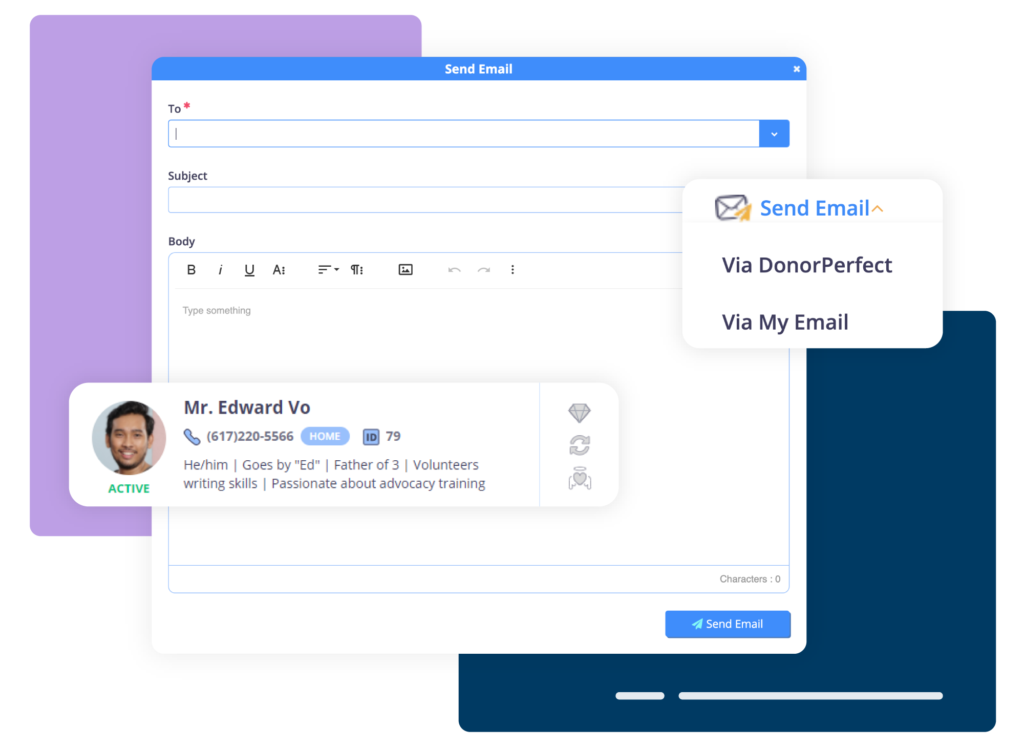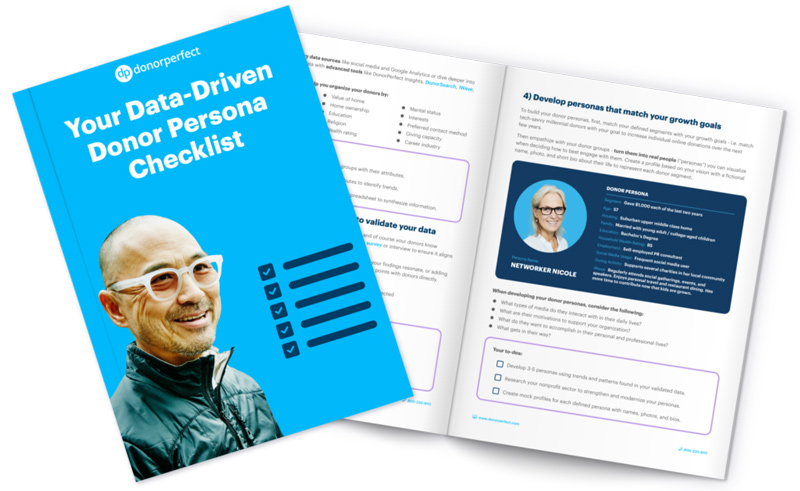Nonprofit Technology & Fundraising Blog
Subscribe to our mailing list
Subscribe to our mailing list

January 19, 2023 | Donor Acquisition, Donor Data, Donor Engagement, Fundraising Communication
Whether you’re writing an email or an appeal letter, mail merges offer the chance to make a large communication feel like it was intended specifically for each individual reader. While mail merges may feel like old news, they’re still an effective way to add personal touches to large communication efforts.
Why bother personalizing your appeals at all? We have a small part of our nervous systems called the Reticular Activating System, and one of its major functions is to filter information that is particularly relevant to us and separate it out from other sensory “noise.” It gives us the ability to scan and quickly parse out what information is or isn’t important. So if a donor skims your appeal, they’re more likely to continue reading if they subconsciously catch mention of their name or something that’s personally meaningful to them.
Here are five ways to use your CRM to personalize your appeals and capture your supporters’ attention.
Remember the last time someone recognized you, but you had no idea who they were? Maybe someone who went to your high school waved you down, and the best you could come up with was, “Hey…you!” Shoot, what was their name?
When your communications open with “Dear Friend” or “Valued Supporter,” it makes your donors feel like that person you didn’t recognize. They’re someone whose name is at the tip of your tongue – someone you haven’t kept in touch with, who doesn’t often cross your mind, and who isn’t particularly connected with you.
On the flip side, adding a name to your direct mail appeals can increase response rates by 135%. Simply calling your donors by their names adds a layer of respect and familiarity that doesn’t go unappreciated. Depending on the tone of your appeal, you can personalize the salutation, too, by using first names only, formal salutations, or even nicknames.
Save time with pre-configured mail merge templates for labels, envelopes, letters, and emails in DonorPerfect

All of the personalization in the world won’t help your appeals succeed if your data isn’t accurate. Addressing a donor by the wrong name discourages them from opening your letter, or in some cases, may discourage them from supporting your nonprofit entirely. Why would Julia want to support your cause if you keep calling her Julie?
It’s easier to maintain clean data than to overhaul your entire database, and that starts with standardizing your data entry procedures. Create a guide for everyone who touches your database, and limit the number of users with editing privileges to minimize errors.
Want cleaner data, but aren’t sure where to start? Check out our quick guide for Data Entry Best Practices in DonorPerfect, or connect with a Database Professional and get a health check and cleanup to help get your system in tip-top shape.
Check out on-demand webinars and expert webcasts, including “How to Use Data to Manage Your Nonprofit”
Mail merge fields are helpful for the address block of a letter and the salutation, but they can be used for so much more. Incorporating personalization throughout the body of your message makes your appeal feel truly personal, and keeps your reader engaged. Here are some ideas:
“Your gift of [AMOUNT] to [FUND_NAME] last year was crucial in placing 50 foster dogs with loving families last year.”
“We’re so touched by your gift [IN HONOR/IN MEMORY] of [TRIBUTE_NAME].”
“As a monthly donor, you’ve given [CALENDAR YEAR TO-DATE] so far this year, and we’re thrilled to count you among our sustaining supporters.”
Move on from the “Dear Friend” letter with the Data-Driven Donor Persona Checklist

Your donors don’t give arbitrarily, and sending them all the same generic $25, $50, and $100 asks may deprive them of the opportunity to rise to a higher level of generosity. It’s also good to avoid asking for far more than a donor is comfortable giving, so you can create personalized ask arrays for each donor’s reply card.
We recommend including their most recent gift, their most recent gift multiplied by 1.5, and their most recent gift multiplied by 2. An ask of $100 may feel reasonable to a $50 donor, but may not for a donor whose last gift was $5.
For prospective donors who haven’t made their first gift yet, try including a blank line so they can set their own giving threshold. You can experiment with increasing their ask amounts from there!
Learn more about how to use your giving data with
How to Create a Monthly Giving Form that Converts
Particularly for email appeals (though it works well for direct mail, too), you can use A/B testing to split your audience into two groups and see if there are any merge fields that encourage more clicks or gifts.
For example, one half of your audience might receive a message with nicknames, and the other half might be greeted with a more formal salutation. Is there a meaningful difference between the open and click rates? If so, you’ve learned something special about your audience that you can apply to future appeals!
Create, personalize, and analyze the success of your fundraising emails with Constant Contact
Mail merges are a tried-and-true tool in personalizing and adapting your fundraising appeals for larger audiences. With clean data and regular testing, mail merges can help inspire your audiences to give generously and maintain a personal connection to your nonprofit.
Get the Digital Fundraising Makeover for Nonprofits

As a communications professional with a decade of experience, Ally specializes in helping fundraisers develop creative donor engagement techniques tailored to their mission. To see her ideas in action, check out Learn more about Ally Orlando
This site is protected by hCaptcha
and its Privacy Policy & Terms of Service apply.
Copyright © 2025 SofterWare, Inc.
Follow us on social!